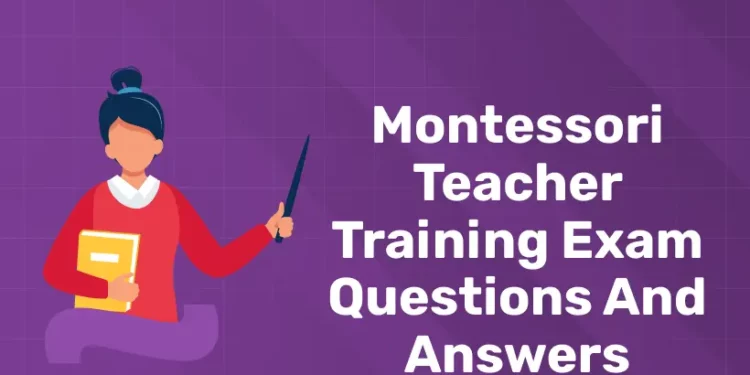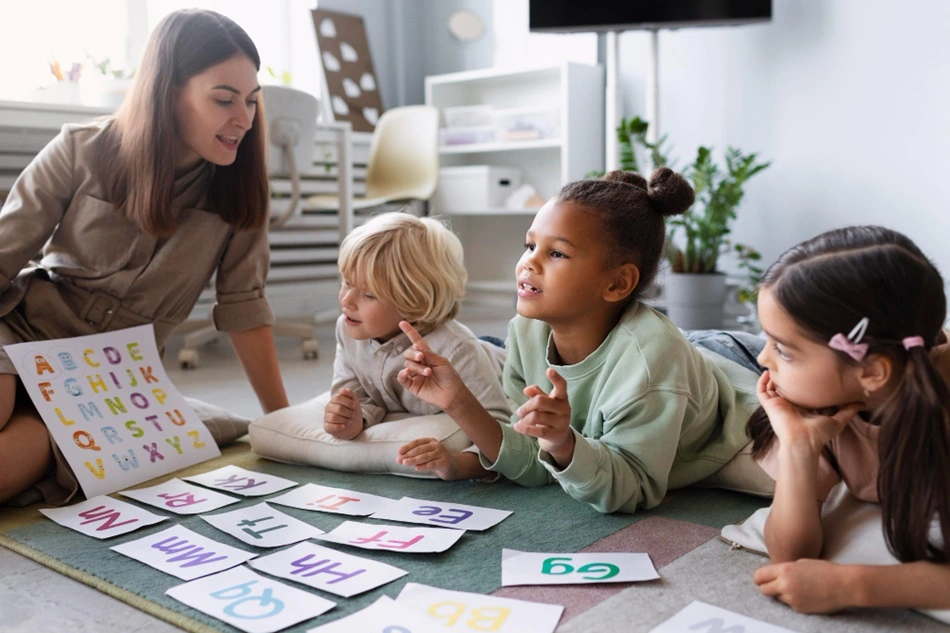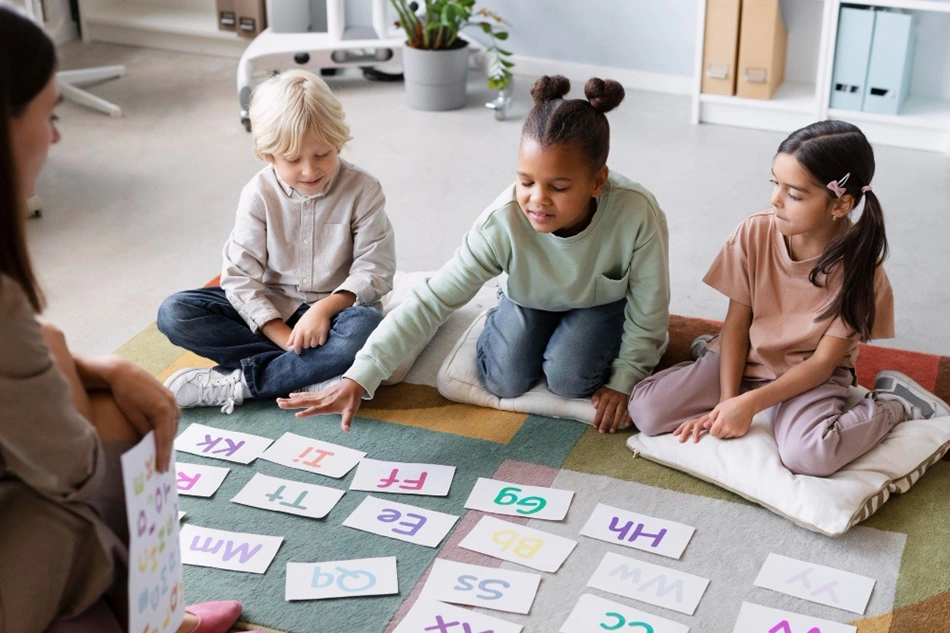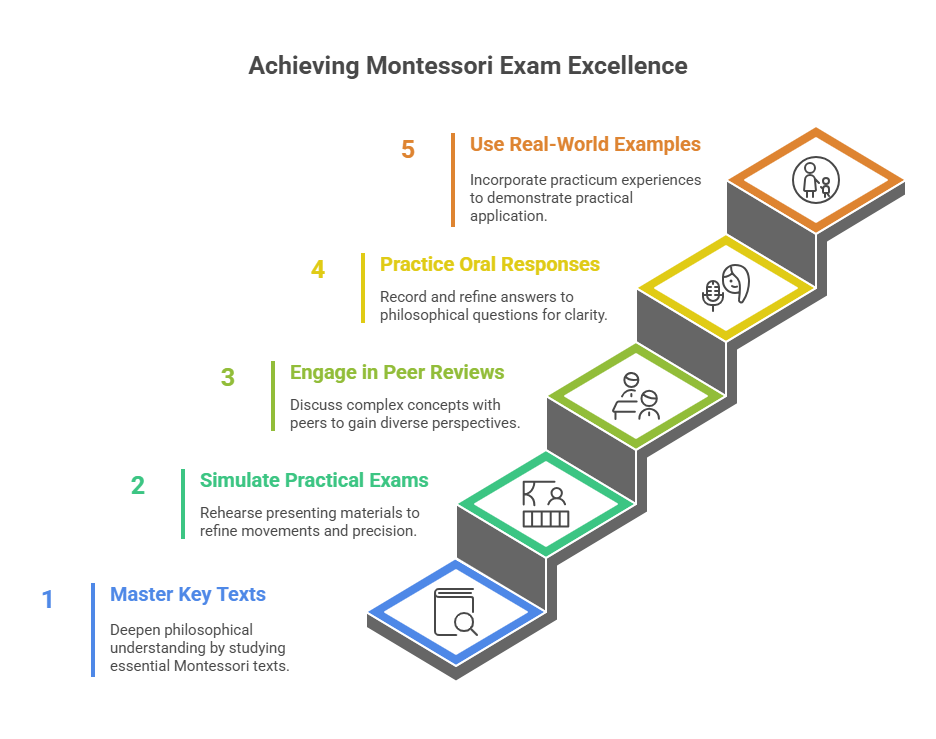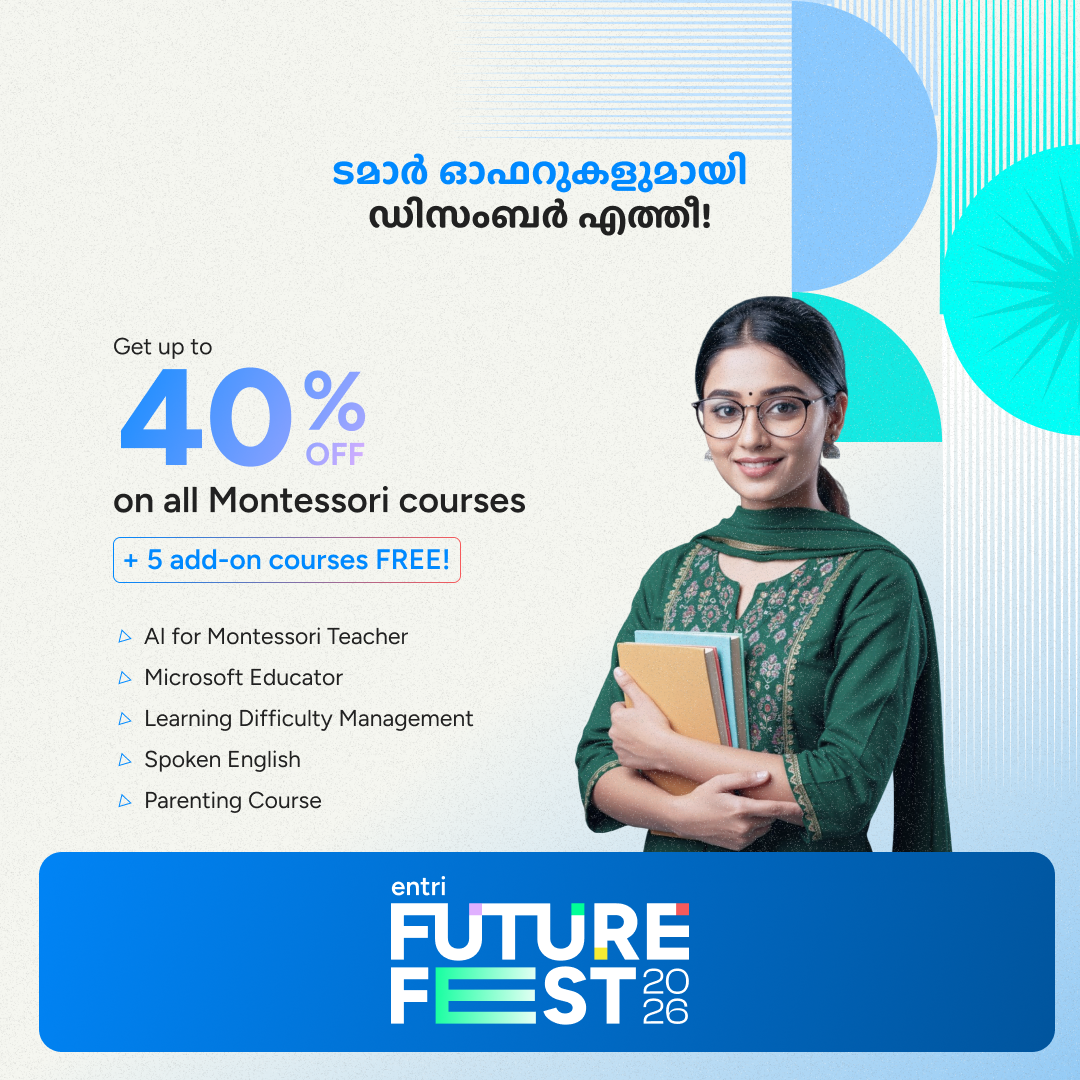Table of Contents
The Montessori Approach allows the child to grow in a comfortable space where freedom and discipline correlate. The Montessori training method focuses on the whole growth and development of a child. It equips the child to face the world with more courage.
The individuality and the skills of the children will be nurtured from the early ages of their lives. The Montessori education teaches the student to choose from the best all by themself. In Montessori education, the child is regarded as the owner of their own decisions, which will allow the child to become self-sufficient and confident. The self-reliance mentality will be nurtured, and the child will be exposed to the world of adults with newfound confidence.
What is the Montessori Teacher Training Exam?
Montessori Teacher training exam will assess the experience, talent and skill of the candidates to handle the growth of a child. The Montessori teaching is completely different from the traditional teaching methodologies. It leads the children to achieve growth and development all in one go.
Instead of stuffing with subject knowledge, the Montessori education focuses on practical experience. The exam will assess the ability of the teachers to understand the child’s psychology. It covers all the aspects of the development of a child and the skill sets associated with it. The exam is mandatory to teach the students in the Montessori education.
Enroll in the Montessori Teacher’s Training Course! Get free Demo Here!
Montessori Teacher Training Exam Questions and Answers
1: What is the primary focus of the first plane of development in the Montessori method?
Here are the frequently asked questions and answers for the upcoming Montessori Teacher Training exam. Those candidates who wish to crack the exam shall refer to the questions and try to frame and answer for themselves. The questions and answers will give you a clear idea of the nature and the difficulty level of the Montessori Teacher Training exam.
🌟 Build Your Resume Now
🌟 Start Your Interview Preparation
What is the Montessori method of teaching arts and crafts?
The Montessori method of art aids the growth and development of the students by invoking their cognitive skills. The arts and crafts activities will help in developing the innate skills of the students.
The Montessori method of teaching art allows hand-eye coordination. Even problem-solving skills and critical thinking capacity can be enriched with the help of the Montessori method of arts and crafts activities.
Montessori art also promotes imagination and inventiveness, letting children represent themselves voluntarily and investigate their thoughts and opinions visually. In the Montessori learning space, children will be provided with open-ended skill-related shifting that permit children to research and utilize their imagination.
The Montessori approach to art will allow the children to improve their imaginative skills and understand the byproduct of their imagination. The inquisitiveness and imagination skills of the children shall be boosted with the new and innovative method of learning art in the Montessori approach.
Become a Certified Nursery teacher! Get free Demo Here!
Who was Dr Maria Montessori? Write a brief.
Dr Maria Montessori was one of the foremost female Italian physicians who revolutionized the academic sector with new and innovative doctrines. She was daring enough to look deep into the new educational philosophy. And she was born in Chiaravalle, Italy, on August 31, 1870.
She was raised by both her father and mother. She became the first female presence in the medical school. Maria Montessori started learning physics and biology at the University of Rome in 1890. She excelled in her examinations and won many prizes and scholarships.
She stood for the cause of child education. The Montessori approach concentrates on the overall growth and development of the children. It is not only focusing on fostering the cognitive skills but also fostering the other skills.
Why do children love big words? Explain?
Children love using big words, which is directly and indirectly part of their brain development. The use of the big words increases the meaning of the known words, which are partial. The misunderstanding of the novel words will be rectified with the help of the big words.
Primes kids to treasure terms and expand their understanding of phrase sense. Kids can learn and comprehend unexplored words to enable them to articulate the ups and downs of their foremost adventures and unique feelings with enthusiasm.
Start your journey to becoming a certified Montessori teacher! Get free Demo Here!
What is the doctrine of liberty? Explain?
Maria Montessori applied the concept of freedom to improve the individuality of the children. Freedom with limits is the term that aptly defines the idea of liberty applied to the idea of the educational philosophy. The child is free to choose what is important to the child’s growth.
The Montessori approach offers various choices to the children out of which they are asked to choose. They will be exposed to the space where they have to limit themselves and acquire the ability to be obedient by themselves. In the Montessori approach, liberty acts as a document of discipline.
The child will be allowed to choose what is right for them. Child can self-direct the methodologies of the studies which brings in more liberty to choose. The child will also be equipped to be exposed to the adult world with the liberty to accept what is inevitable for their growth and development.
Enroll in Montessori Teachers Training Course! Get free Demo Here!
How should the teacher try to help the child?
A teacher should identify the unique talent and the ability of the child and help to nurture what is the essential quality within the child. A child should be mentored and guided but not ordered around. The Montessori education methodology advises the child to be the bearer of the knowledge and the teacher to be the facilitator.
A teacher should help the child to improve the cognitive skills of the child. A teacher can facilitate the overall growth and development of a child. The mentorship shall be given to the children and share the classes which are interesting and informative.
A teacher should communicate with the students and provide them with space to grow. They will be given a space to clear their doubts and satisfy their quest for knowledge. A teacher should also recognize the innate skills and nurture new skill sets to mold the children into better human beings.
Write in brief about the color boxes and their types.
The major objective of using color boxes for the Montessori teaching is to develop the visual sense of the colour in the mind of the child. The primary colours are identified in the colour box. The primary colours include red, yellow and blue which reside in the colour box number one.
This color box in a Montessori approach is introduced in the initial stage of their growth. When the child is between the ages of 2.5 to 3 years, the colour box 1 will be introduced. Whereas the colour box no 2 and 3, where different color palettes are present, where the mixing and blending of various colours happen, this will be introduced to the child after 3 years of age.
The direct aim of the Montessori color tablet package is to devise a visual bias of color utilizing primary shades. The secondary objective of this training is to support kids and create a feeling of optical demand. In short, it enhances a child’s adequate motor talents by permitting them to correspond and operate pincer grasps.
Join for Montessori Teachers Training Course Today!
Write briefly about the stereotactic sense?
Stereognostic is the sense that allows the child to sense an object without directly seeing it with eyes. This is also known by the term tactile gnosis, which needs aacn individual to recognize an entity without hearing, looking, smelling or tasting it.
A child will be able to locate the alarm when it rings even if the child resides in a dark room. The sense of touch will also be improved in the Montessori training. Stereognostic sense includes Baric, Thermal, Olfactory, Gustatory, Chromatic, and Proprioception.
Stereognosis is the power to determine the constitution and structure of a three-dimensional entity, and therefore its essence, with tactile manipulation of that thing in the absence of visual and auditory stimulants.
What is the Montessori philosophy’s view on child development, and how does it influence classroom practices?
The Montessori philosophy views child development as a natural, self-directed process driven by the child’s innate desire to learn. Dr. Maria Montessori believed children possess an “absorbent mind” (0-6 years), effortlessly soaking up knowledge from their environment. This period is marked by sensitive periods—windows of heightened receptivity for skills like language, movement, or social behavior.
This philosophy shapes classroom practices by:
-
Creating a Prepared Environment: Classrooms feature child-sized furniture and accessible materials, like the Pink Tower or Movable Alphabet, to foster independence.
-
Encouraging Self-Directed Learning: Children choose activities based on interest, with teachers acting as guides. For example, a 4-year-old might select a polishing activity to refine fine motor skills.
-
Supporting Sensitive Periods: Activities align with developmental stages, such as offering sensorial materials during the 2-6-year sensory period.
-
Promoting Mixed-Age Collaboration: Classrooms blend ages (e.g., 3-6 years), allowing older children to mentor younger ones, enhancing social and leadership skills.
Explain the role of Practical Life activities in a Montessori classroom and their impact on child development.
Practical Life activities, such as pouring, spooning, or polishing, are foundational to the Montessori curriculum, fostering independence, coordination, concentration, and order. These tasks mimic real-world activities, connecting children to their environment and building life skills. The key areas are:
-
-
Care of Self: Activities like buttoning or washing hands promote personal responsibility.
-
Care of Environment: Sweeping or watering plants teaches respect for shared spaces.
-
Grace and Courtesy: Lessons like greeting others or waiting for a turn enhance social skills.
-
Control of Movement: Pouring water or carrying trays refines fine and gross motor skills.
-
Get Certified & Start Your Montessori Career
Montessori Teacher Training Course by Entri App: Gain expert skills, earn certification, and kickstart your teaching career.
Join Now!Advanced Preparation Strategies
Excelling in Montessori exams requires a blend of study, practice, and confidence. Here are advanced tips:
-
Master Key Texts: Study Dr. Montessori’s Own Handbook and The Discovery of the Child to deepen philosophical understanding.
-
Simulate Practical Exams: Rehearse presenting materials like the Binomial Cube or Practical Life trays, focusing on precise, graceful movements.
-
Engage in Peer Reviews: Join study groups or online forums like Montessori Teachers Network on LinkedIn or Entri’s community to discuss complex concepts.
-
Practice Oral Responses: Record answers to philosophical questions, refining clarity and confidence.
-
Use Real-World Examples: Incorporate practicum experiences into answers to demonstrate practical application.
A trainee in Kochi shared, “I recorded myself presenting the Pink Tower and got feedback from my mentor. It made my exam presentation flawless.” Real-world practice bridges theory and application.
Why Entri Montessori Teacher Training Course?
Entri’s Montessori Teacher training course offers the best opportunity for you to excel in the sector of the Montessori teaching field. The systematic and structured curriculum with an inclusive learning space will aid in meeting the international standard.
The course will equip you to deepen your knowledge and understanding of Montessori teaching, which will benefit you in the long run. Entri’s Montessori Teacher training course will facilitate personal and professional growth. The global education standards are met and ensure quality education. The aspirants will be positively supported. Join Entri and be a part of a changing era!
Final Thoughts
Cracking the Montessori Teacher Training exam requires a combination of deep theoretical knowledge and real-world classroom awareness. Focus on understanding the philosophy, not just memorising answers.
Whether your goal is to teach in India, the UK, or the UAE, a Montessori certification opens doors to fulfilling career paths where you shape the minds of future generations.
Start your Montessori teaching journey with Entri’s Montessori Teacher training course and test prep modules today.
Get Certified & Start Your Montessori Career
Montessori Teacher Training Course by Entri App: Gain expert skills, earn certification, and kickstart your teaching career.
Join Now!Frequently Asked Questions
What is the Montessori Teacher Training exam?
The Montessori Teacher Training exam is a certification assessment designed to evaluate your understanding of the Montessori philosophy, classroom methodology, child development principles, and use of Montessori materials. It typically includes theoretical, practical, and multiple-choice questions.
How can I prepare effectively for the Montessori exam?
To prepare well, study authentic Montessori manuals, attend live classes or workshops, solve mock exams, and regularly observe children if possible. Entri’s Montessori test prep modules offer guided support and practice tests for thorough preparation.
Is the Montessori exam difficult to pass?
The exam is not difficult if you understand the core concepts deeply. Memorising answers alone is not sufficient. Practical observation and the ability to apply Montessori principles are key to success.
Can I take the Montessori exam online?
Yes, many institutions and training platforms like Entri App now offer online Montessori certification exams, allowing candidates to complete assessments from home with proctoring or timed modules.
What is the pass mark for the Montessori exam?
Pass marks may vary by institution, but most Montessori certification exams require at least 60–70% overall. Some may include both written and practical evaluations that need to be passed individually.


